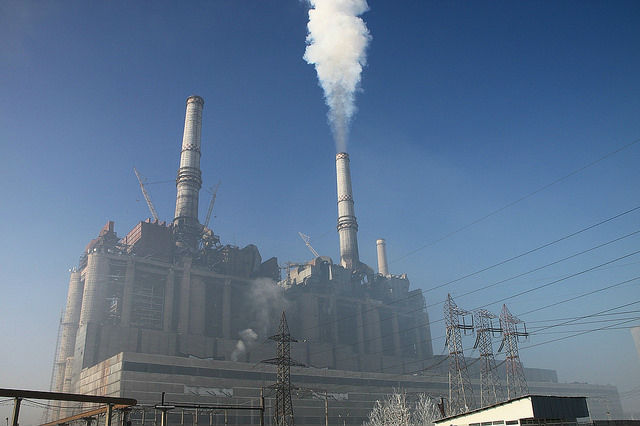The Clean Power Plan and Texas: What You Need To Know
Last Monday, President Obama announced the Clean Power Plan, an ambitious piece of policy that seeks to dramatically reduce carbon emissions from power plants. Supporters see this as having a significant impact on US carbon emissions, and hope that it will lead to the US power industry's transformation into one that is cleaner and more efficient. Critics argue that it is unachievable, too expensive, and illegal. So what is the Clean Power Plan, and how will it affect Texans? Here's the Clean Power Plan defined in three points.

Coal-burning power plant. The Clean Power Plan seeks to radically reduce emissions from the electricity generation sector by 2030
1. The Clean Power Plan: 47 plans for the price of one
The Clean Power Plan sets individualized greenhouse gas emissions reductions goals for the electricity generating sector for 47 states in the US. As it only applies to existing fossil-fuel burning generation facilities, the states of Vermont and Washington DC are excluded (they don't have any fossil fuel power generation plants). Hawaii and Alaska are not yet included because the EPA is still considering their unique power grid systems.
The CPP includes interim and final goals for emissions reductions for each state. They have several options for how they reach these goals: switching from coal to natural gas, boosting renewables, improving energy efficiency, or by taking part in cap-and-trade systems. States must submit their plans by no later than 2018, and must start cutting emissions by 2022 at the latest.
The EPA expects that the combined emissions reductions from all of the states involved will lead to a 32 percent decrease in emissions from the power generation sector from 2005 levels by 2030.
2. Texas and the Clean Power Plan: the potential for big changes
When it comes to electricity, it's true that everything is bigger in Texas. Texas is an electricity powerhouse; the state consumed 365 million MWh in 2012, 40 percent than the next highest consuming state. Along with generating more electricity, the Texas electricity sector also emits the most carbon than any other state in the country. Texas must reduce emissions by about 21 percent from 2012 levels by 2030. The EPA states is a "moderate" target compared to other states, but it will still require some dramatic changes in the Texas electricity industry.
Not surprisingly for a state that prides its independence, many politicians and energy industry members don't like the idea of having goals imposed upon them from Washington, and Attorney General Ken Paxton has pledged to sue the federal government over the plan. Critics argue that the changes required to reach the goals will make electricity more expensive, which would hurt industry and could lead to job losses as well as greater hardship among low income households. Others argue that it will also require too many coal plants to be retired (some suggest that the CPP would require up to 15 percent of Texas's current electricity generation capacity to be retired) which could threaten grid reliability.
On the other hand, in many ways Texas is well-positioned to benefit from the types of changes likely to come about from the CPP. As the leading natural gas producing state in the country, Texas industry could do well if more states switch to natural gas for electricity generation. The state also boasts the largest windpower generation capacity in the nation, with about 23 percent of the nation's wind capacity installed in Texas. Along with wind and natural gas resources, Texas also benefits from an abundance of sun, and has great potential for solar power production. The ERCOT grid has already started looking at demand response. For supporters, these are strong factors for predicting that Texas stands much to gain from the Clean Power Plan
Others note that Texas an interest in accepting the Clean Power Plan and working with the EPA on implementing it; if states refuse to submit their own plans, the EPA will develop one for them.
3: The Clean Power Plan and Rates: some increases ahead
Unsurprisingly, changes this big are going to come with a cost. The EPA predicts that in the short term electricity rates will rise throughout the country for all households, by about 3 - 6 percent. However, they also suggest that rates would decline over the long term with improved efficiencies.
That being said, it's difficult to say for certain by how much rates will increase. A lot will depend on what kinds of actions Texas and other states will take, along with how technological innovations affect costs. In any case, Texas power consumers won't have to worry about dramatic increases within the next year or so, as emissions cuts aren't required until 2020.
Want more information about the Clean Power Plan?
Find out more about the Clean Power Plan on the EPA Website
